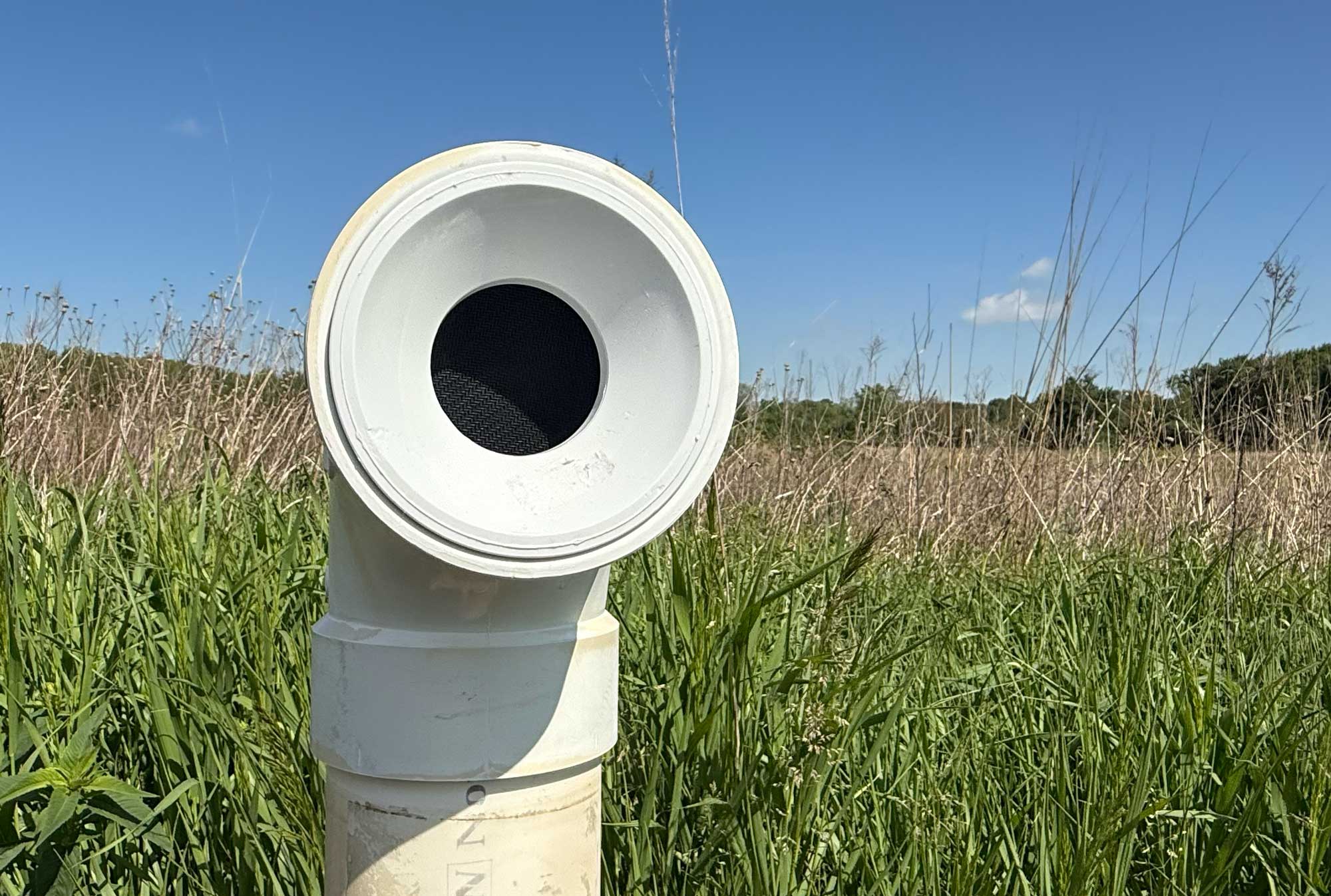Protecting wildlife: Forest Preserve installs upgraded fishing line bins

The Forest Preserve District is installing 36 redesigned fishing line recycling containers at popular fishing locations to help protect wildlife and reduce plastic pollution.
The bins are sturdier, less prone to vandalism and better suited to collect only fishing line for proper recycling.
The updated containers feature modified openings and internal flaps that deter people from stuffing them with garbage.
“We redesigned them to have cleaner, more consistent, vandal-proof containers,” said Matt Novander, the Forest Preserve’s chief landscape architect. “The container opening has been modified to make it more difficult to insert cans, bottles, diapers and other refuse into them. And the locations also were reevaluated for need and accessibility.”
Discarded monofilament line is a serious hazard to birds and other wildlife. The Forest Preserve has documented multiple injuries and deaths from entanglement, including a great blue heron hanging from a tree at Rock Run Rookery and a robin that died at Isle a la Cache Preserve. In one case, a pelican tangled in fishing line had to be euthanized due to severe injuries.
“We all have to do our part to minimize our impact on our environment, and when we know better, we can do better,” said Em Wilcher, the Forest Preserve’s recreation coordinator. “Fishing line is a major hazard to wildlife, and we’re asking anglers to be sure to dispose of their line responsibly – but that’s not all. Even people who don’t fish can help.”
Wilcher said anyone who spots monofilament line in the preserves can place it in one of the containers, which are being installed in fishing hot spots and near trail access points.
“When we all care for our environment, everyone wins,” she said. “Always be careful when handling found line – hooks are sometimes left behind.”
Fishing line collected in the containers is shipped to Berkley Recycling in Iowa, where it is melted down and repurposed into products like fish cribs, spools and tackle boxes.
Coil it and cut it
Anglers should take precautions even when there isn't a recycling container available, for instance when they are on a boat or at a more remote fishing location.
“If fishing line disposal containers aren’t available, anglers should wrap the fishing line around something (fingers, stick, etc.) to form a tight coil,” said Seth Love, the Illinois Department of Natural Resources fisheries biologist for Will County. “After forming the coil, use scissors to cut the coiled line into thirds. Essentially, you want to make sure that no piece of line is longer than 4 inches.”
Once the line is cut, make sure it is disposed of in a covered container so animals don't ingest or become tangled in it. Or place it in a secure bag or jar until you can place the line in a recycling container.
Wilcher added that monofilament can be double bagged and dropped off at Forest Preserve visitor centers.
“We’ll include it with our annual shipment to the recycling center,” she said.
Fishing line cannot be recycled through curbside programs, as it requires a specialized process due to the type of plastic it contains.
Also, the Forest Preserve schedules Fishing for Trash programs to help rid the preserves of fishing line and other debris that can harm wildlife. Program dates are Tuesdays, May 20, June 24, July 22 and Aug. 19, at Hidden Lakes Trout Farm in Bolingbrook and Saturday, July 5, to Friday, July 11, at Monee Reservoir. For more information on the cleanup opportunities, vist the Event Calendar.
